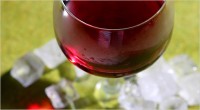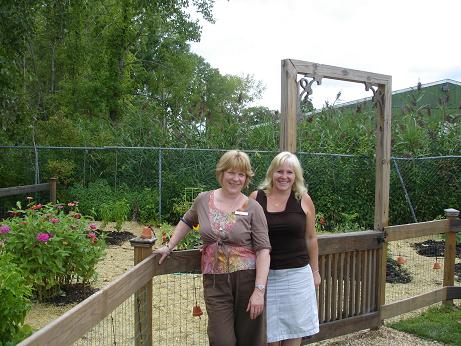Grapevine: A Primer on the Ultimate Wine for Food Pairing
 Last week we explored the world of sparkling wines as natural food pairing accompaniments. Having (hopefully) piqued your curiosity, it is now time to explore the numerous facets of sparkling wine in the form of a primer.
Last week we explored the world of sparkling wines as natural food pairing accompaniments. Having (hopefully) piqued your curiosity, it is now time to explore the numerous facets of sparkling wine in the form of a primer.
1) What makes sparkling wines unique? It is carbon dioxide, created after the initial fermentation process. Once the standard fermentation process of converting sugars in grapes to alcohol (with yeast as the catalyst) is concluded, the resulting still wine takes a divergent path from traditional aging methods. This base wine is subjected to a secondary fermentation, in which the resulting carbon dioxide is captured in the bottle or vat, rather than dissipated into the air (as occurs in still wine production). Voila, the signature bubbles of sparkling wine. Depending on the method used in this secondary fermentation, the bubbles, crispness, balance and sweetness of the end product will differ.
2) What methods are used in secondary fermentation? Amongst the multiple methods in practice today, there are three primary methods employed, depending on the tradition of the wine region, the winemaker’s prerogative or cost considerations.
 The most complex and highly regarded is Méthode Champenois. Yeast is added to each bottle of still wine and stored (racked is the technical term) for several months, which in such tight quarters, produces a highly concentrated effervescence. A single bottle may contain up to fifty million bubbles; hence, the frenzy of froth when poured into a glass. Producers may blend up to six vintages from up to sixty batches of wines in varying proportions for a particular bottling. These wines tend to the most expensive ($30 to $300 per bottle).
The most complex and highly regarded is Méthode Champenois. Yeast is added to each bottle of still wine and stored (racked is the technical term) for several months, which in such tight quarters, produces a highly concentrated effervescence. A single bottle may contain up to fifty million bubbles; hence, the frenzy of froth when poured into a glass. Producers may blend up to six vintages from up to sixty batches of wines in varying proportions for a particular bottling. These wines tend to the most expensive ($30 to $300 per bottle).
The second method is Metodo Charmat. Rather than create a secondary fermentation in the bottle, yeast is added to a large pressurized vat of still wine and the resulting sparkling wine is bottled under pressure. These wines tend to be lighter and more delicate. The Italians use this method extensively for producing their single varietal Prosecco wines. These wines tend to be very affordable ($12 to $20).
The third method is for cost conscious winemakers. Why wait for secondary fermentation to occur naturally? Just inject carbon dioxide directly into large vats of still wine (think soft drinks production). These wines, with big, fast fading bubbles, are typically much less expensive; several are under $10.
3) What names are assigned to sparkling wines? The specific terms tend to follow geography. Sparkling wine produced in the Champagne region of France are the only sparklers permitted to bear the designation “Champagne” on labels. Other sparklers from France are typically referred to as “Cremant.” In the United States, “Sparkling Wine” is the designation used. In Italy, Prosecco is the designation for various styles of effervescence. The more concentrated bubbly style is Spumante, while the lesser bubbly style is Frizzante. Italian bubblies from other regions include Franciacorta, Lambrusco, Brachetto and Moscato.
In Spain, Cava (“Cellar”) has become very popular in the last five years. Made in the Méthode Champenois, it tends to have the best traits of a sparkler, incorporating balanced effervescence, crispness and seductive flavors. It has become my favorite go-to summer wine, typically priced under $15.
4) Which grapes constitute sparkling wine? Just as for still wines, terroir determines the grapes grown. The most utilized grapes are Chardonnay, Pinot Noir and Pinot Meunier. As blends, these produce a well-balanced, highly structured wine with overtones of vanilla, citrus and a creamy mouth feel. In Italy, the most widely grown grape is the Glera, which produces a lighter style, redolent of flowers, citrus or stone fruits. Spain’s Cava is comprised of three indigenous white grapes: Xarel-lo, Macabeu and Parellada, which create a bright, earthy style. Chenin Blanc grapes are utilized in the Loire Valley and South Africa.

Based on past columns, I would typically conclude my column with recommendations from valued local wine shops. However, the plethora of sparkling wines adorning wine shelves today, and their commensurate high quality, make individual recommendations unnecessary. Start experimenting. You won’t be disappointed – and you’ll enjoy the new-found nuances of your meal.
Nick Antonaccio is a 30 year Pleasantville resident. For over 10 years he has conducted numerous wine tastings and lectures. He is co-host of Glass Up, Glass Down, a local cable television series on wine and food; he also offers personalized wine tastings and wine travel services. Nick’s credo: continuous experimenting results in instinctive behavior. You can reach him at nantonaccio@theexaminernews.com or on Twitter @sharingwine.

